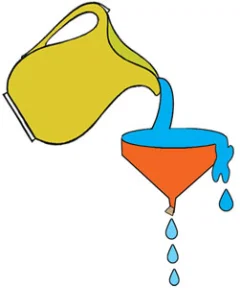Hmm…
Well, the first thing I’ll say is this: You’ve already meditated.
The word ‘meditating’ is similar to the word ‘exercising’. It’s a highly general, vague, catch-all term that includes a broad domain of activity. That domain of activity includes some behaviors that are just natural, organic parts of life.
I’m not being facetious when I tell you that, from what I’ve observed, cats seem to be quite skilled at meditation. I really believe that this is true.
Frankly, any animal that stalks and hunts by stealth is probably pretty good at certain aspects of meditation.
You’re right that there are so many instructions, techniques, definitions, etc.
For the sake of brevity, I’ll use one of the core frameworks from some of the Buddhist traditions.
From this viewpoint, there are two main categories of meditation:
- Attentional stabilization
- Investigative contemplation
The first one more or less corresponds to what Dr. Herbert Benson termed the ‘Relaxation Response’. This was conceived as the counterpart to the ‘Stress Response’.
You may already know this, but just in case, the organ system in the body that governs coordination of and communication within the organism and also between the organism and its environment is the Nervous System.
One branch of the nervous system governs and coordinates ‘automatic’ physiological processes (e.g., heart rate, breathing, blood pressure, digestion, blood flow, muscle contraction, and so on). That part of the nervous system is called the Autonomic Nervous System. (autonomic means automatic, more or less). The Autonomic Nervous System has two branches. One branch, the sympathetic nervous system, revs up the systems of the body for dealing with acutely stressful situations (e.g., a bar fight). The other branch, the parasympathetic nervous system, calms and relaxes the body and devotes energy to long-term building processes (e.g., healing, recovery, regrowth). (‘sympathetic’ in this case is not about how merciful and compassionate the nerves are. It’s a word to describe their physical position in the body.)
Needless to say, we’re mostly overly stressed out. So, in most of us the Sympathetic Nervous System is overly activated. This leads to unhealthy imbalance. So, finding an intentional practice to activate the Parasympathetic Nervous System can be really healthy and restorative.
The recipe for activating the parasympathetic nervous system is simple and only has two criteria: 1) choose some safe, repetitive phenomenon, and 2) pay steady attention to it. These two criteria combined send a strong message to the nervous system that ‘We Are Safe’. And it begins to activate the good old parasympathetic response.
These also happen to be the instructions for the first kind of meditation.
Phrased more simply: Chill Out and Tune In.
The secret is: You can choose any safe, repetitive phenomenon. Raindrops falling on a window. A piece of music. Clouds in the sky. The ocean waves ebbing and flowing. The sound of a lecturer’s voice. The rise and fall of your own breathing. The beating of your heart. Your own voice chanting repetitively. Anything that is safe and repetitive. Then you just put your attention on it. Usually most stressed out people will feel bored at first. And then after a while, they’ll feel relaxed. And then most people will fall asleep. hahaha. (Because they’re walking around exhausted and need sleep.). If you’re rested enough, the next thing that will happen is that you’ll feel relaxed and chill.
That relaxed and chill mode? Some traditions call that ‘Access Concentration’. It’s actually the beginning doorway to deeper ‘Concentration Meditation’. So that’s all you need to know to get started with that.
One good idea is to choose something that you think is beautiful or comfortable or enjoyable. But you can choose anything. It’s probably just easier if it feels good to you.
As we do that longer, the attention becomes more stable. It’s not crazy or anything. Of course, if you’re not physiologically freaking out, then things would get stabler. We do a version of this every time we go to sleep. The special part is making the choice to do it while you’re still awake.






